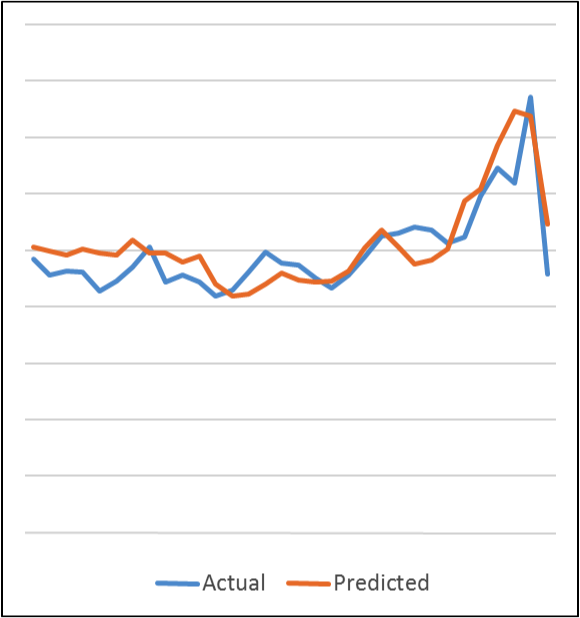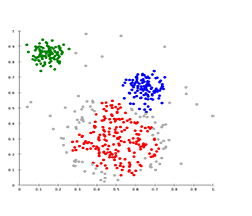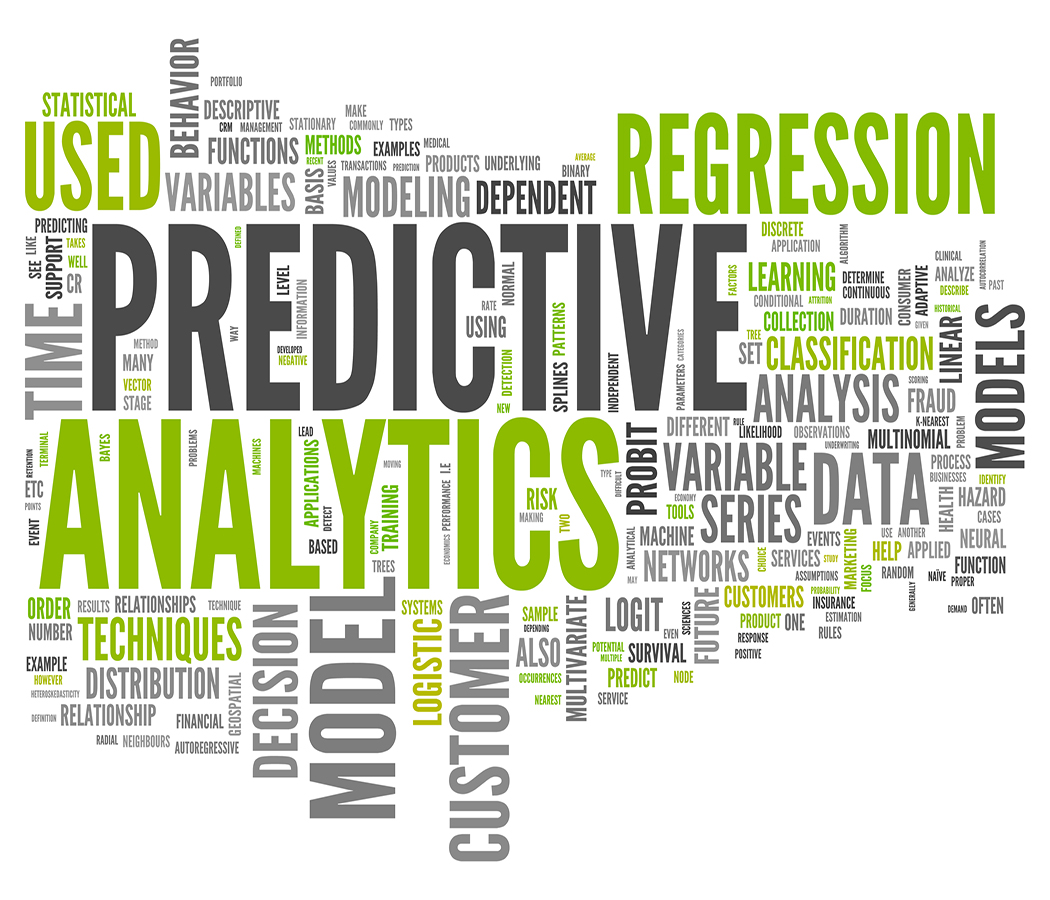BUSINESS ANALYTICS APPLICATIONS
NSI has used business analytics in support of numerous client initiatives to provide critical insights into key business objectives enabling clients to get more out of their data, make smarter decisions, and maximize their bottom line.

Forecasting Peak Online Usage
A global software and entertainment company had a need to better forecast peak online usage of their product, to avoid lost revenue due to insufficient capacity, or excess cost due to overestimating demand.
Using various business analytics tools including a combination of behavioral science research, advanced statistics, multivariate regression, and social media discourse analysis methods, a series of predictive models were developed that provided a new level of rigor and science for capacity planning and projections.
Through residual analysis and ongoing consulting with key client personnel, the model predicted usage on a daily basis to within an average of 5%. Sentiment data was also used to provide guidance on advertising productions, thematic elements, and key sentiments that drive (or detract from) customer revenue.

Optimizing Customer Service Wait Times
A customer service organization was not meeting its goals in satisfaction with wait times, even though actual wait times had been driven progressively lower.
Applying discourse analysis of customer sentiment data and non-linear regression business analytics both showed that while actual wait time was important, the treatment customers received had a substantially larger impact on how they felt about the amount of time they actually waited than did the number of minutes they had to wait.
By deriving the relationship between all of these variables and overall wait time satisfaction, and using differential calculus, it was possible to predict satisfaction with wait times at different levels of actual service level, and different levels of quality of service.
The findings indicated that some service levels could be lengthened to allow for more time with each customer, while simultaneously increasing satisfaction and lowering cost.

A More Adaptable Approach
Historically, segmentation in most organizations has been based on fixed factors such as demographics and attitudes… which tend not to change. However, purchasing and usage patterns can shift depending on changing needs, situational factors, and circumstances. For example, someone may buy a business book today for work, a children’s book to read to her son tomorrow, and a crime novel the next day for herself. Traditional segmentation makes this common scenario impossible if it is only based on demographics.
NSI’s business analytics approach to segmentation is based on behaviors and situational factors… which enables organizations to not only develop targeted marketing strategies for their most valuable segments, but also to gain insight into how to move people into the more valuable segments. This approach was successfully applied in profiling customer service preferences in one application, and different types of brand usage in another.

From Statistics to Action
Predictive analytics at NSI is not just about building models and doing time series regression. It is about finding which levers to pull, and what impact different courses of action will have on business success. Past efforts have helped companies better decide which product improvements to make, how to fine tune customer service strategies, or even what future return on investment may be from cinematic promotions.
In each case, NSI uses advanced statistical business analytics techniques and business analytics to find relationships, and provide clear guidance on the implications of different types of decisions. Our approach is to leverage these analyses to foster data driven decision making, presented in clear, common language that can be acted upon by different functional executives.

Global Product Launch
A global B2C corporation launched a new online service, in an effort to reinvigorate its existing brand franchise. To maximize the success of the launch, timely data on performance, purchase behavior, brand usage, and attrition were critical.
NSI staff played a critical role in providing on-site business analytics support to the global brand leadership team, including weekly prioritization, analysis, and delivery of high impact findings to help find ways to maximize brand performance. In the words of the Director of Business Intelligence, the team provided “a critical component in defining and enhancing decision making through analytics.”

Tailoring to the Language of the Brand
Every brand has its own unique language. A word or phrase that could mean something positive in one industry may mean the complete opposite in another. For example, a customer service representative who “tanks” is a terrible thing in most cases, but would be a compliment in the video game industry. In some industries, churn means sales, while in others, it means lost business.
Leveraging work done in different cultures around the world, NSI’s team of cultural anthropologists, communications experts and social psychologists have created custom codebooks for a variety of applications, allowing for much greater accuracy for text and business analytics purposes than can be provided by more traditional “off the shelf” providers. This approach has been applied to everything from reactions to advertising to customer service interactions and different social media channels, to help get a more accurate, customizable, and brand-specific picture of sentiment.

Voice of the Customer Program
A global customer service organization implemented a voice of the customer program to help utilize valuable information gleaned from customer service contacts to help identify, prioritize, and escalate emerging problems with pricing, products, and delivery of services.
However, while communication channels evolved organically, it was unclear how to optimize or replicate the process. In addition, the system worked mostly because of personal relationships, which would not necessarily transfer to new or additional staff once key members advanced to new positions.
Utilizing social network and other business analytics techniques, NSI successfully mapped, diagnosed, and help to streamline the entire process, as well providing a clear roadmap of the informal network to assist with new or expanded usage of the overall program.